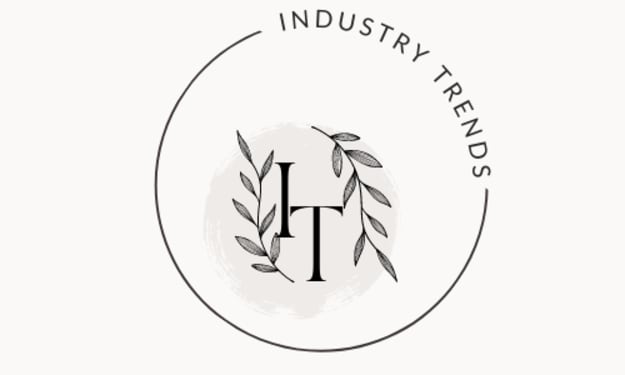Why Are Online Sales of Scar Treatment Products Rising in U.S.?
U.S. Scar Treatment Market

“Acne is the most common skin condition in the United States, affecting up to 50 million Americans annually.” Says the American Academy of Dermatology (AAD). This common disease leads to nasty scars on the skin, which is a key reason people in the country go for a range of cosmetic and personal care products. Other kinds of common scars in the country are hypertrophic scars and keloids, which drastically degrade the appearance, and with people becoming increasingly conscious of their looks, cosmetic and personal care companies are making good money.
Another key reason topical products are so popular is that apart from reducing the appearance of mature scars, they prevent their formation in wounds that have freshly healed. With the increasing incidence of wounds in the country, the demand for topical treatments is rising. The U.S. accounts for one of the highest volumes of surgeries in the world, for both essential and elective purposes. Since surgeries often include incisions into the skin, the prevalence of post-surgical scars is rather high in the nation.
With time, silicone-based topical scar treatment products have gained widespread popularity among the masses. They are effective on a wide range of scars, such as stretch marks and hypertrophic, acne, keloidal, and post-surgical scars. Such products reduce the darkness of the scars, as well as their size, which is why silicone gels, sprays, gel sheets, and creams are witnessing rapidly increasing sales. As a result, numerous types of silicone-based products have been launched in the country for scar treatment, including Avosil Scar Care ointment, ScarAway, and Kelo-Cote and Kelo-cote spray.
Acne, caused by the clogging of the hair follicles by dead skin cells, sebum, and dirt, is the most-prevalent skin condition in the U.S. As per the American Academy of Dermatology (AAD), nearly 85% of the U.S. population is affected by acne at some point in its life, which leads to scar formation, eventually. Similarly, the American Burn Association (ABA) recorded around 486,000 burn injuries in the U.S. in 2011. Burns also lead to nasty scars, which often have detrimental effects on the way a person looks.
The increasing expenditure on personal care by the U.S. population is an outcome of the rising awareness about different scar treatments. For instance, according to the AAD, a staggering 40–50 million Americans spend a combined $2 million annually on the prevention and treatment of acne itself. As an outcome of the rising dermatological awareness, Americans are adopting home-use topical products, including creams, oils, and gels, for the reduction or removal of scars, because of their high efficacy and low price.
The U.S. population suffers from multiple types of scars — acne scars, keloid and hypertrophic scars, post-surgical scars, stretch marks, and contracture scars. Among these, the products used to treat keloid and hypertrophic scars will witness the fastest growth in demand in the coming years. This can be attributed to the rise in the volume of general surgical procedures, cases of burns and chronic wounds, all of which lead to the creation of ugly scars.
Among the various types of treatments available in the U.S. scar treatment market, including topical treatments, lasers, injectables, and surgeries, topical treatments have been the most popular till now, as gel sheets, gels, oils, and creams are now being increasingly used at homes. For instance, topical products, such as silicone gels, help in the reduction of prominent immature scars and prevention of the formation of scars on freshly healed wounds.
The varied reasons for skin ailments have resulted in an increasing demand for scar treatment, which has, in turn, led to the development of new and improved products. In the recent past, cosmetics firms have focused on the production of home-use topical products and getting them approved by the U.S. Food and Drug Administration (FDA). Some of the key companies offering scar treatment products in the country are Quantum Health, Pacific World Corporation, Johnson & Johnson, Valeant Pharmaceuticals International Inc., Revitol Corporation Inc., CCA Industries Inc., Scarguard Labs LLC, and Merz Pharma GmbH & Co.
With key players working to meet the increasing demand for scar treatments, the U.S. population is being offered numerous products. The increasing awareness and focus on personal care will result in a huge demand for all the scar treatments available and newer ones in the near future.
Moreover, the easy availability of these and other scar treatment products on online platforms has led to their increasing sales. Due to the rising internet penetration in the country, e-commerce activities are picking up. Online shopping portals offer numerous facilities, such as cashless payments, home delivery, offers and discounts, easy returns, and freedom to compare similar products by different brands. Thus, cosmetic and personal care companies in the U.S. scar treatment market are rapidly establishing an online presence, as well as offering their products on popular e-commerce platforms.
The surging sale of such products via online channels is because most people purchase them for home use. With the increasing appearance consciousness on account of the rising penetration of social media and fashion and lifestyle TV shows and magazines, people are doing more than before to maintain their appearance. Moreover, the employment rate in the country is rather high, and looks, rather a presentable appearance, have become rather important in the corporate sector. This is why both men and women are purchasing products that can help in the treatment of scars and make them look good.
Therefore, with the rising incidence of various types of scars, the demand for related products and treatments will increase in the country.





Comments
There are no comments for this story
Be the first to respond and start the conversation.